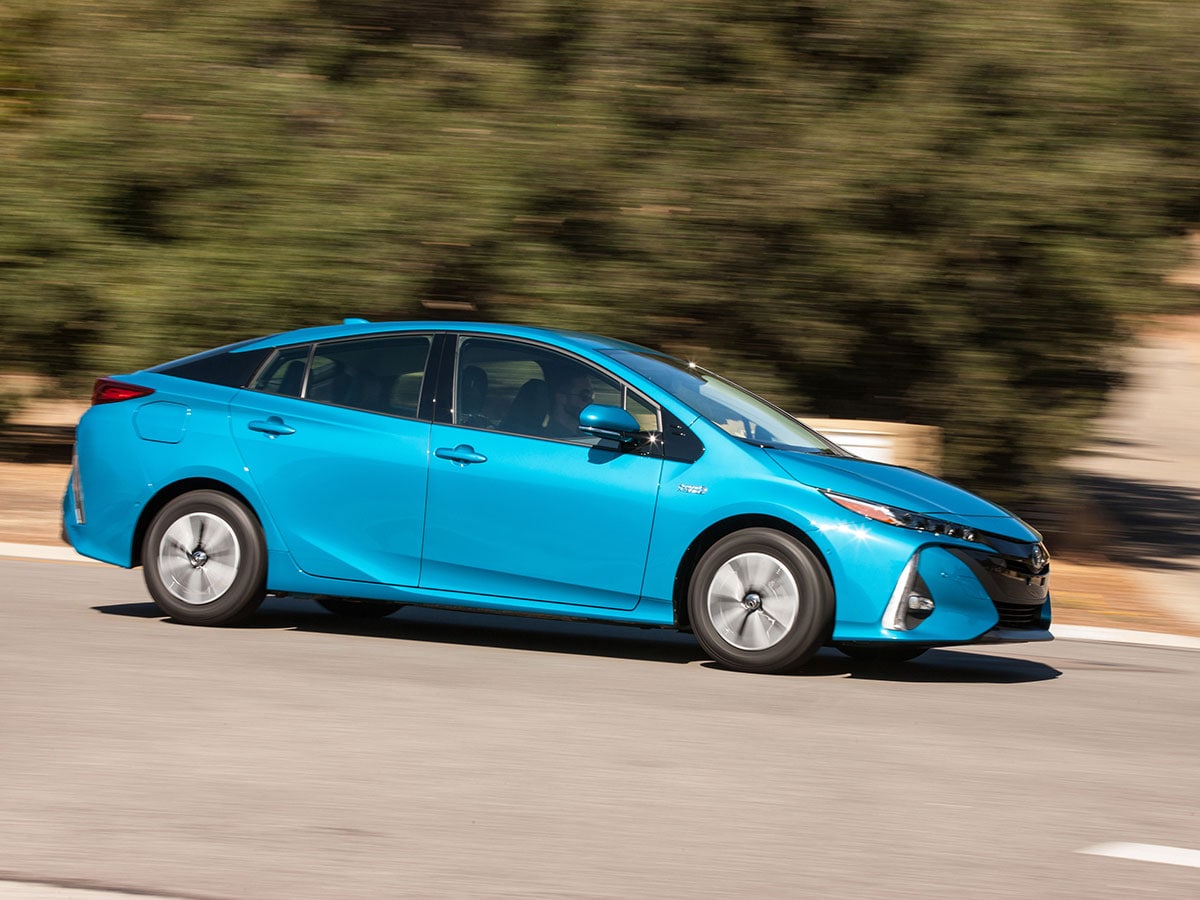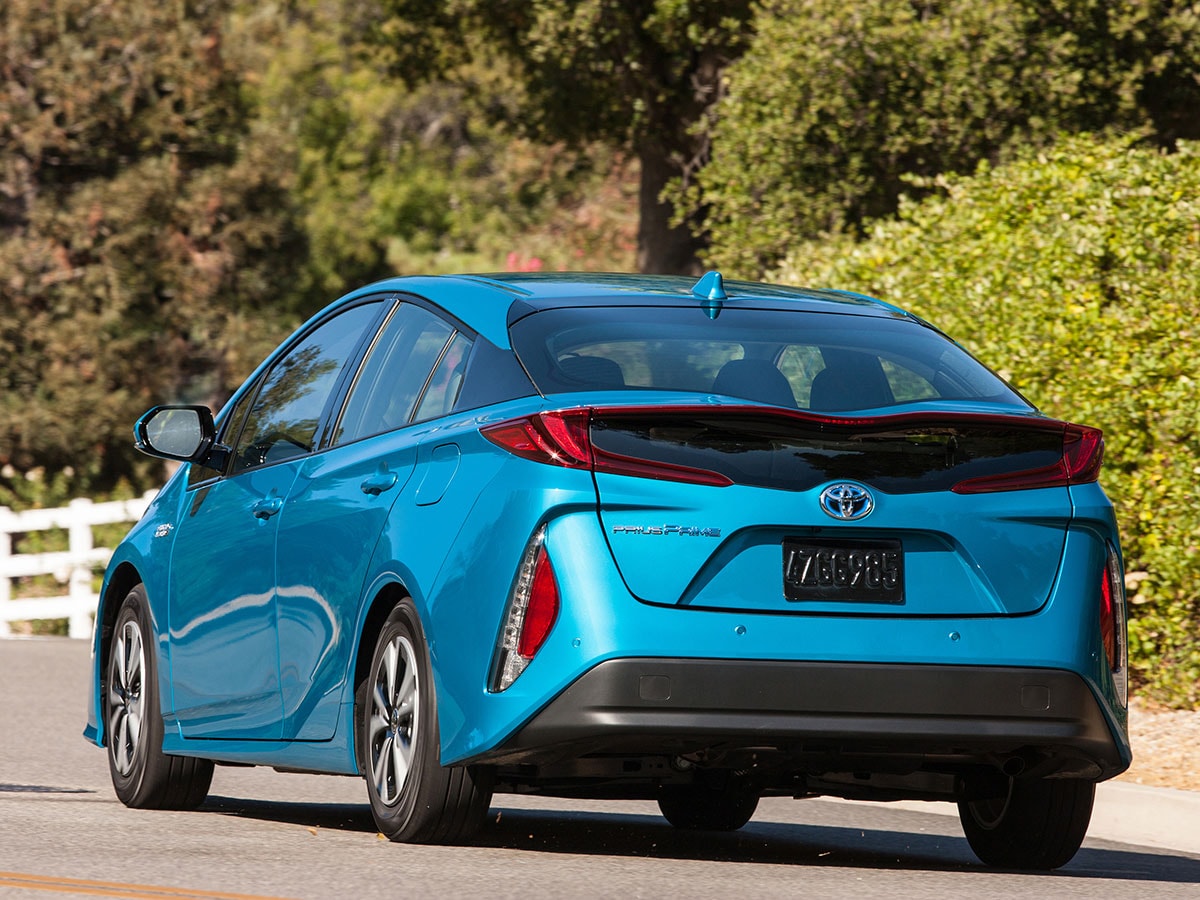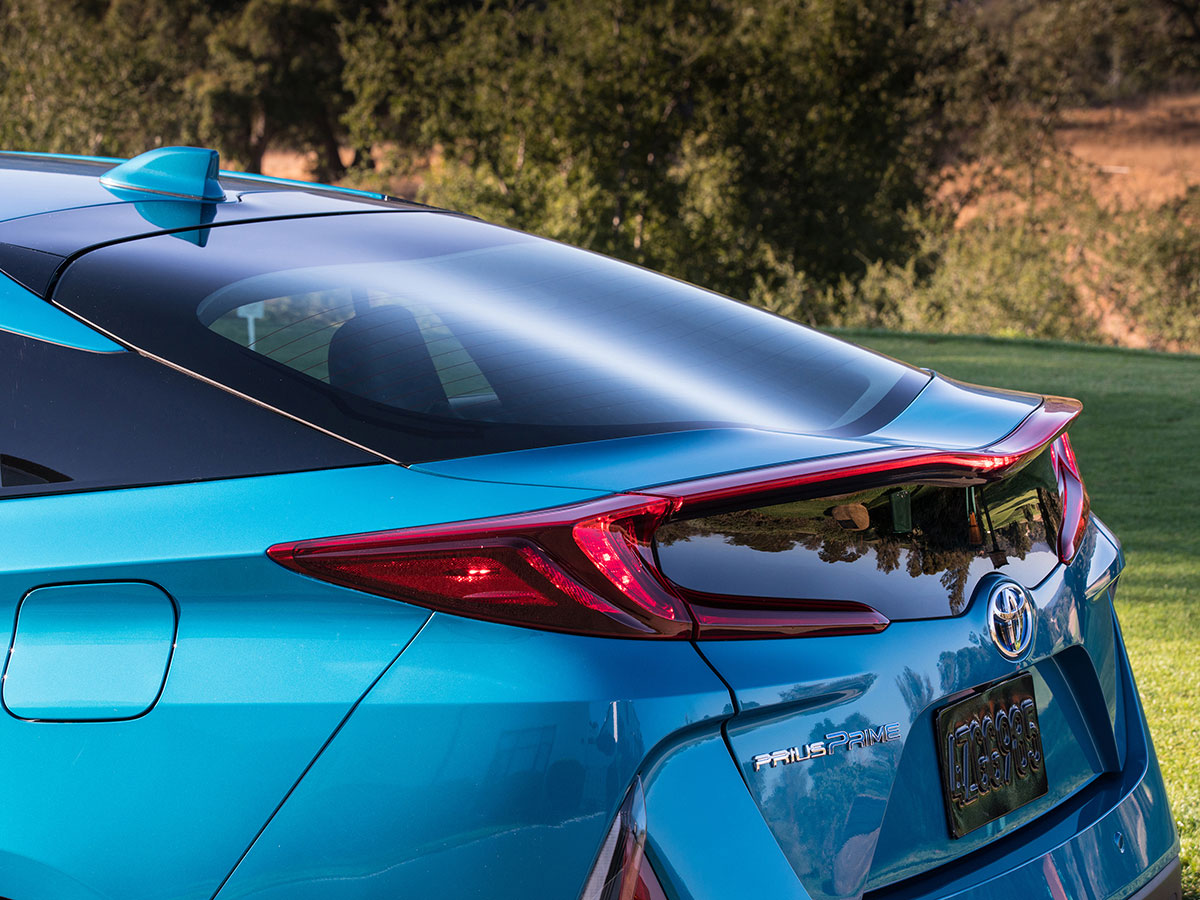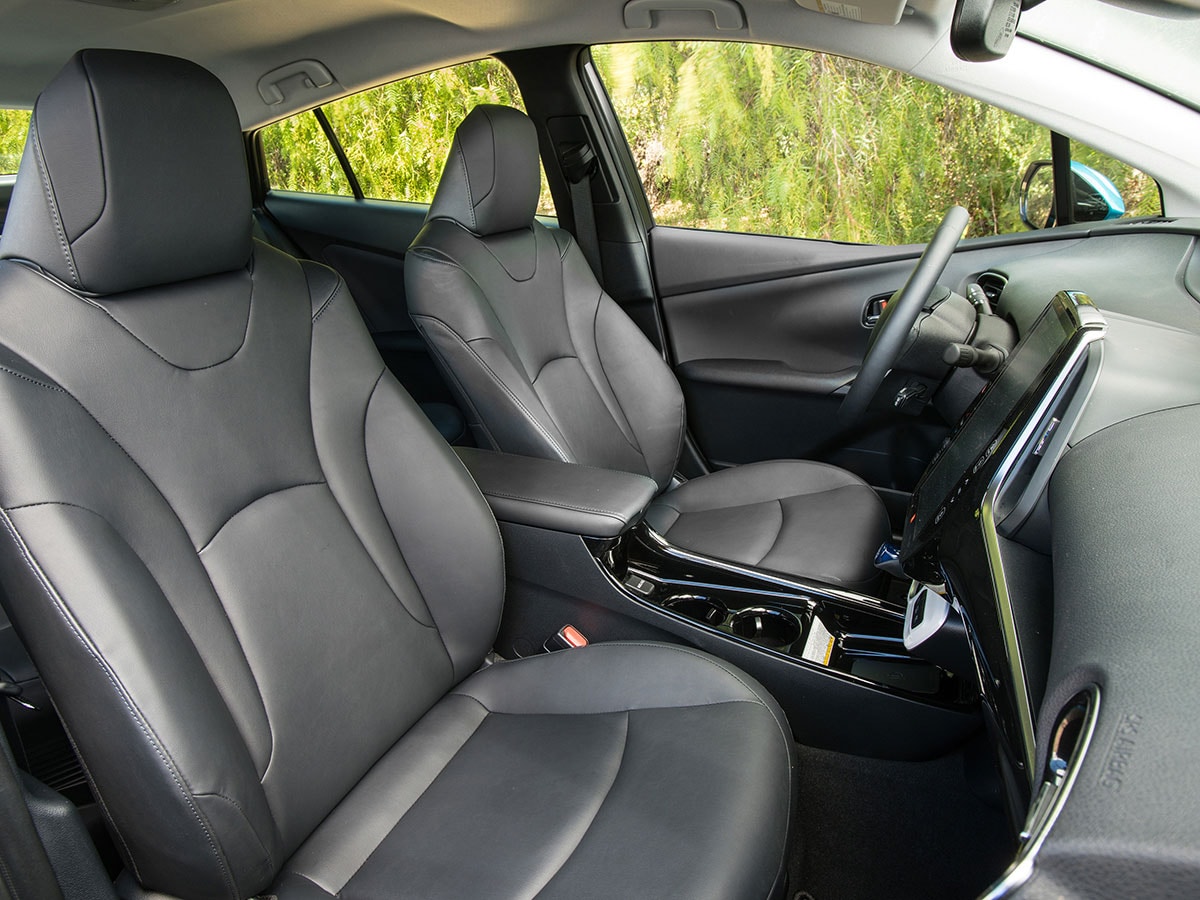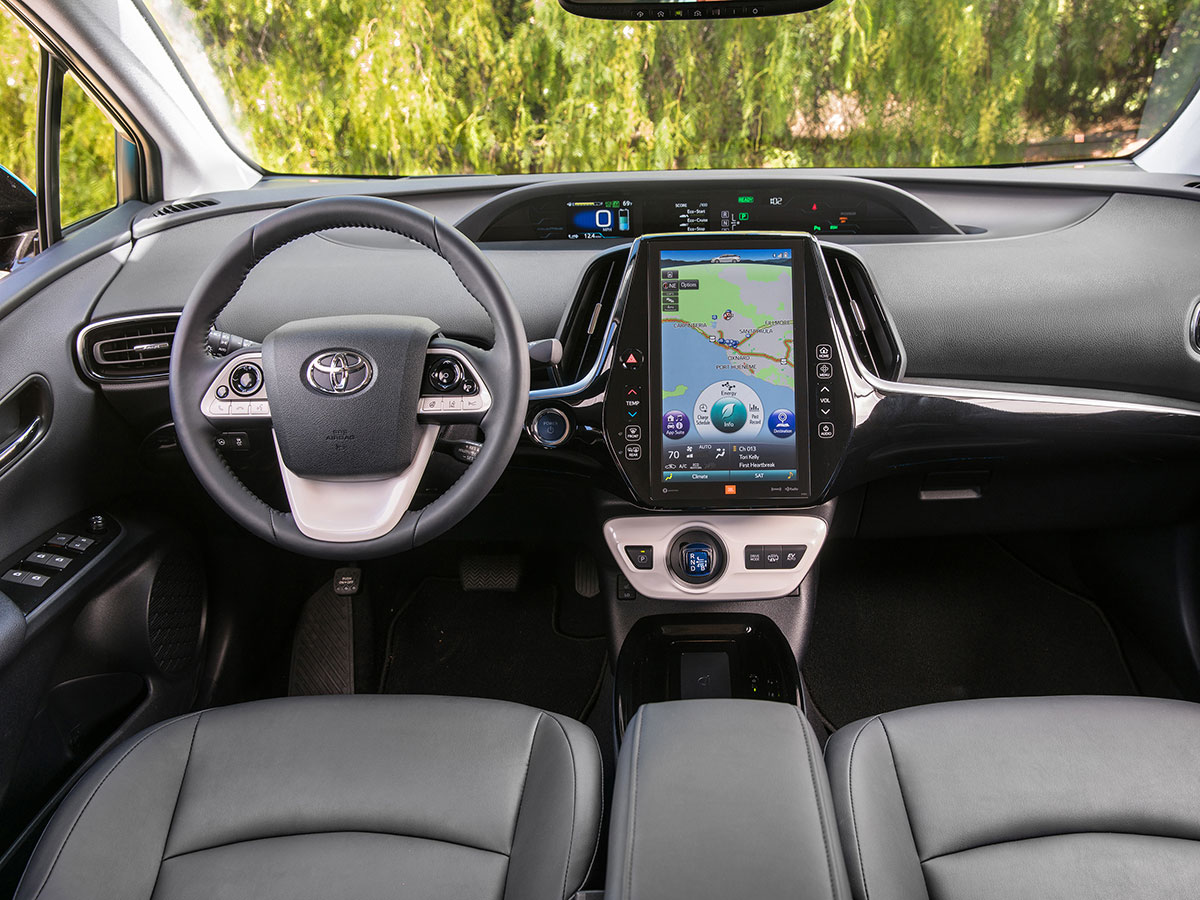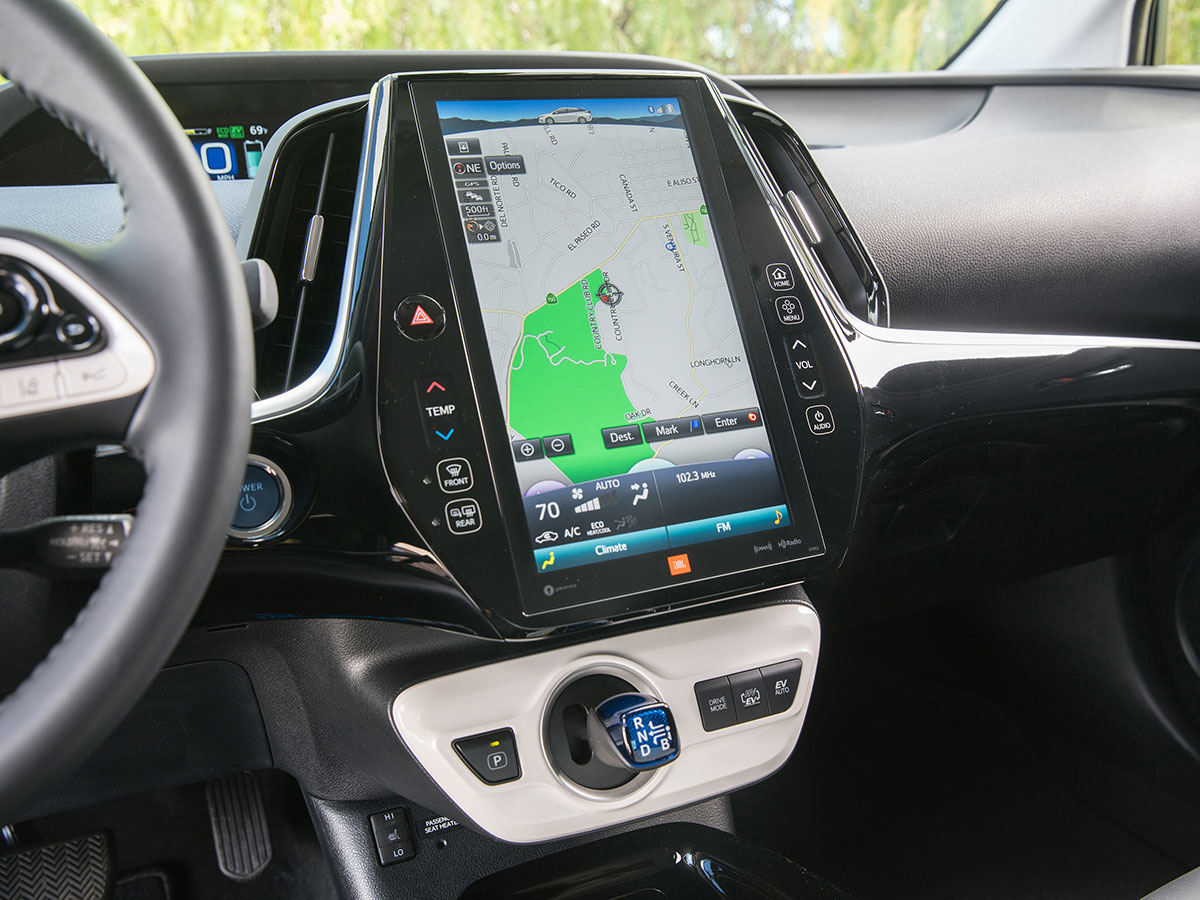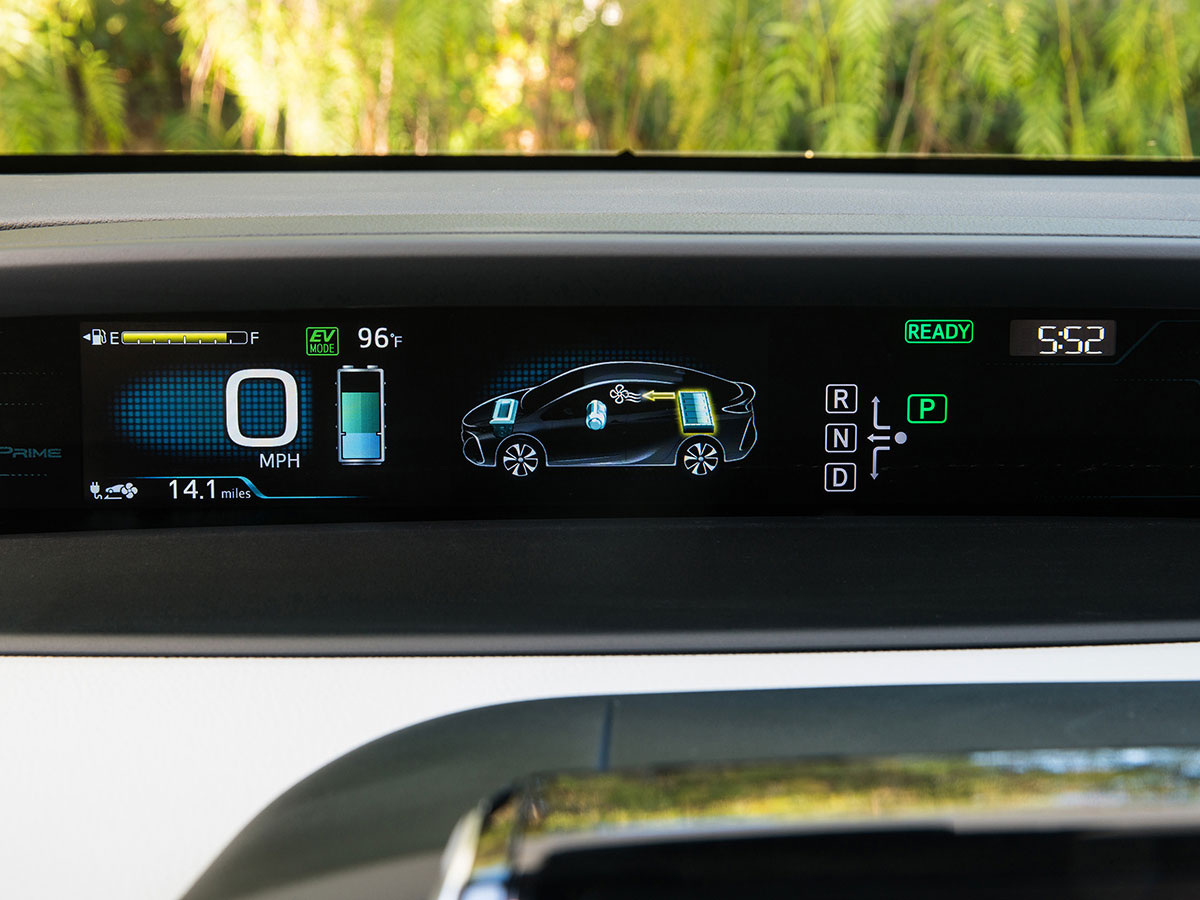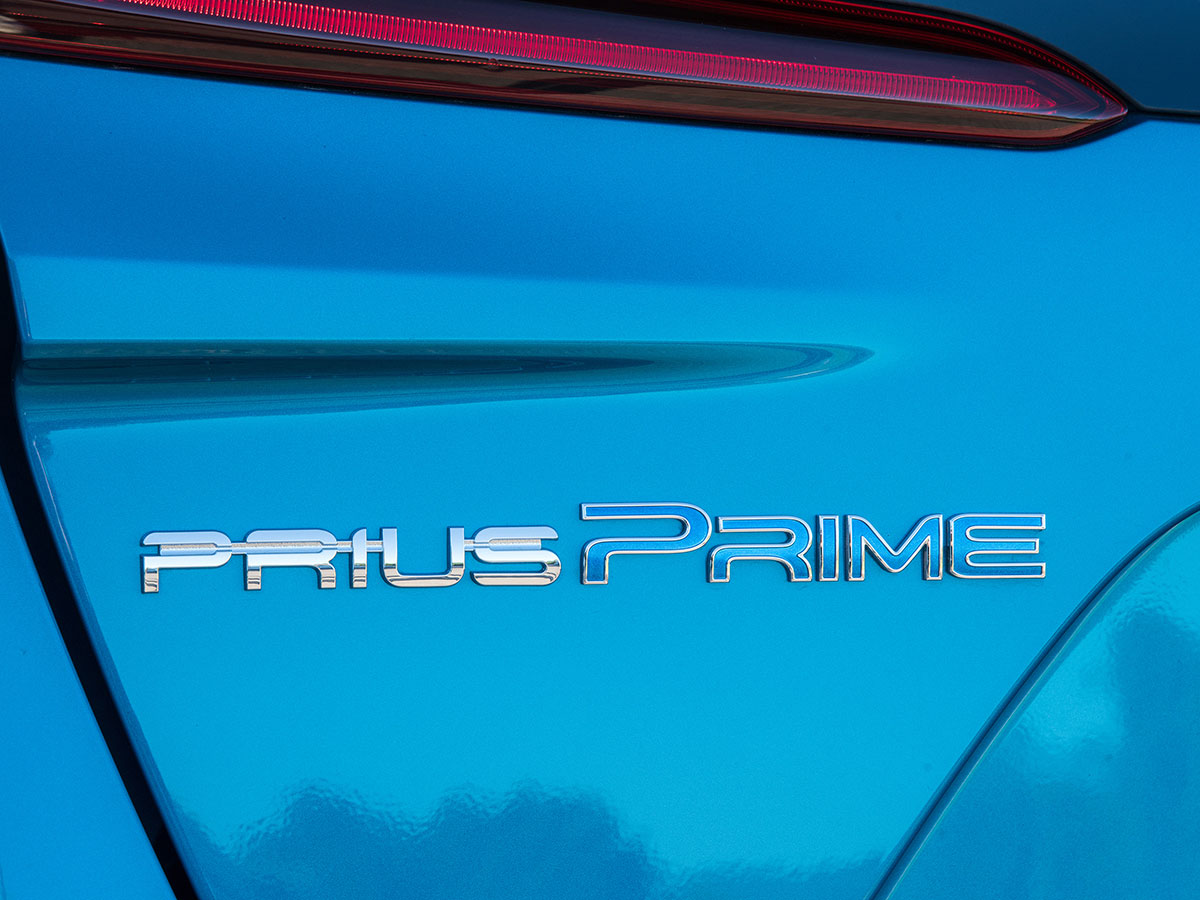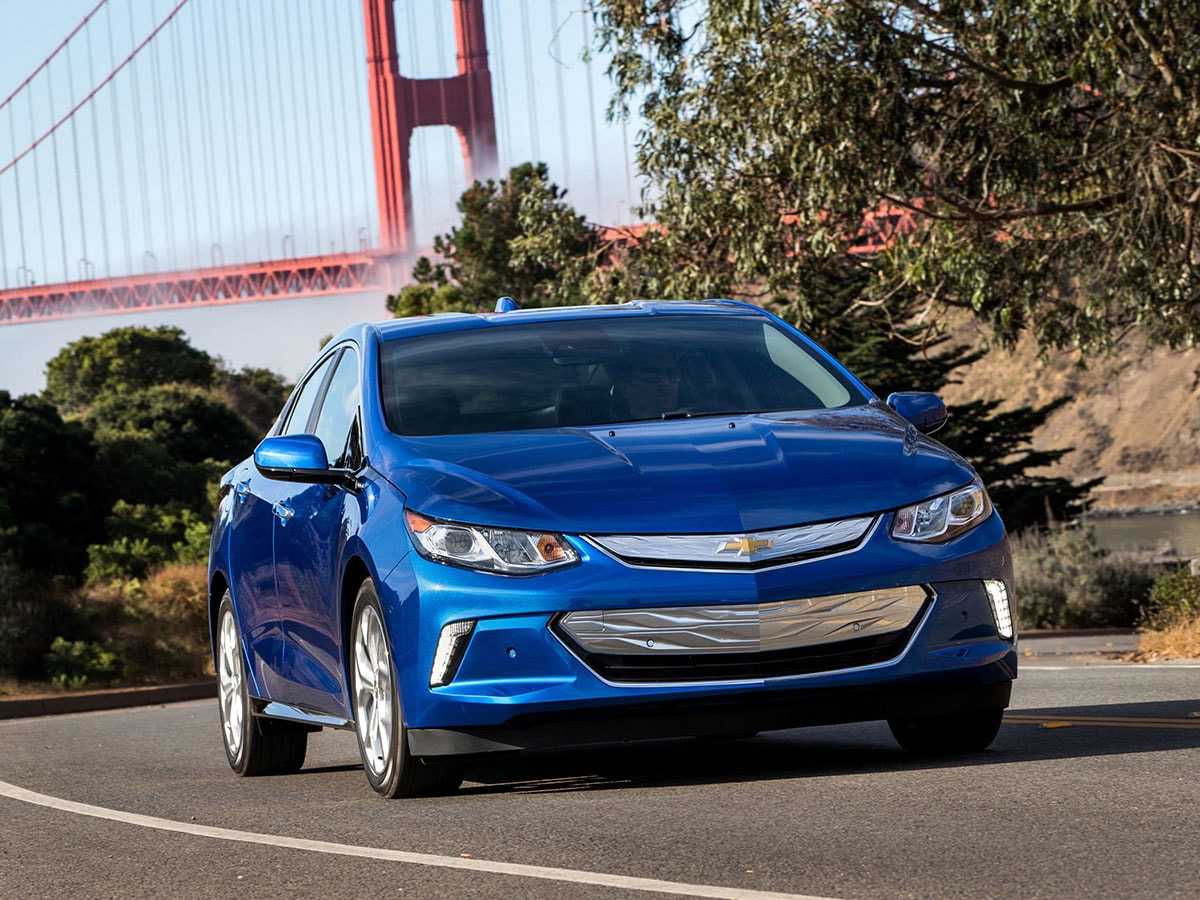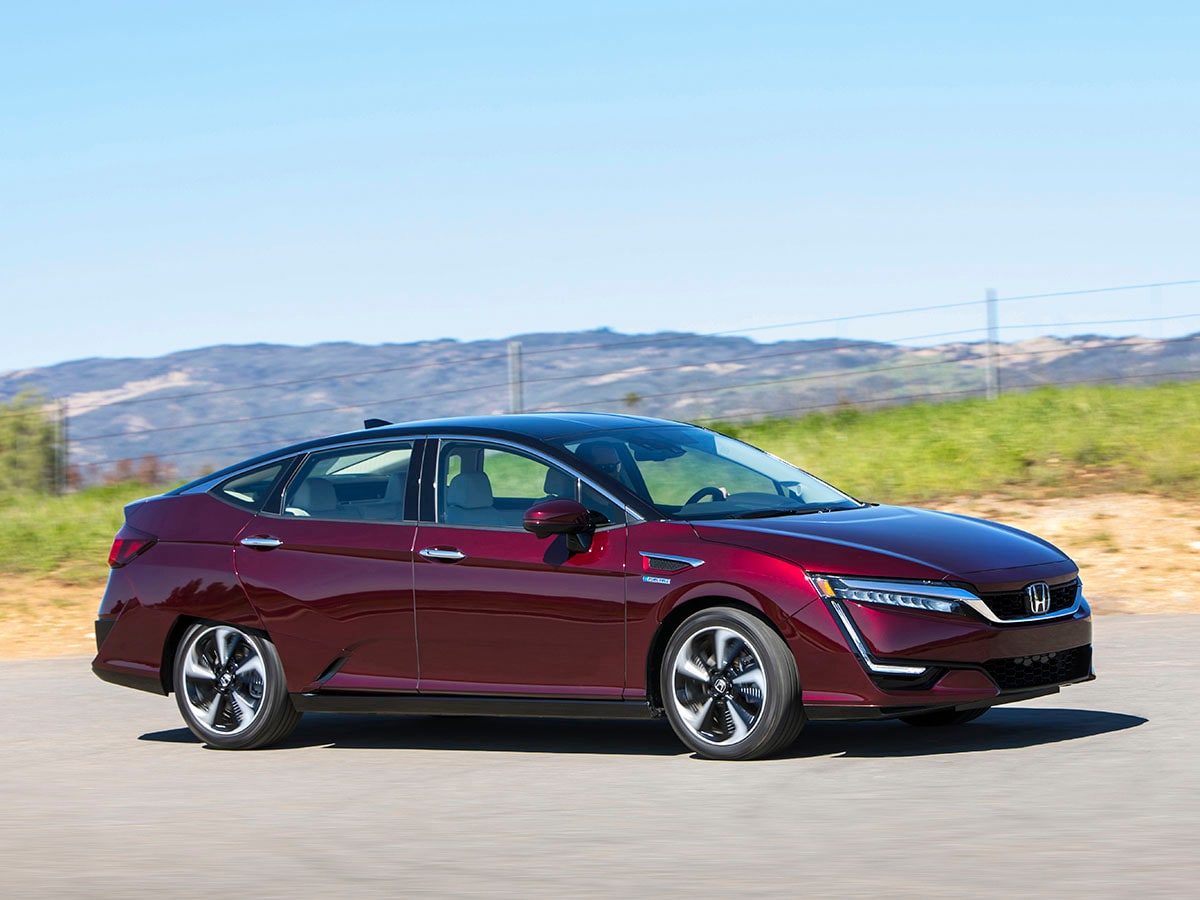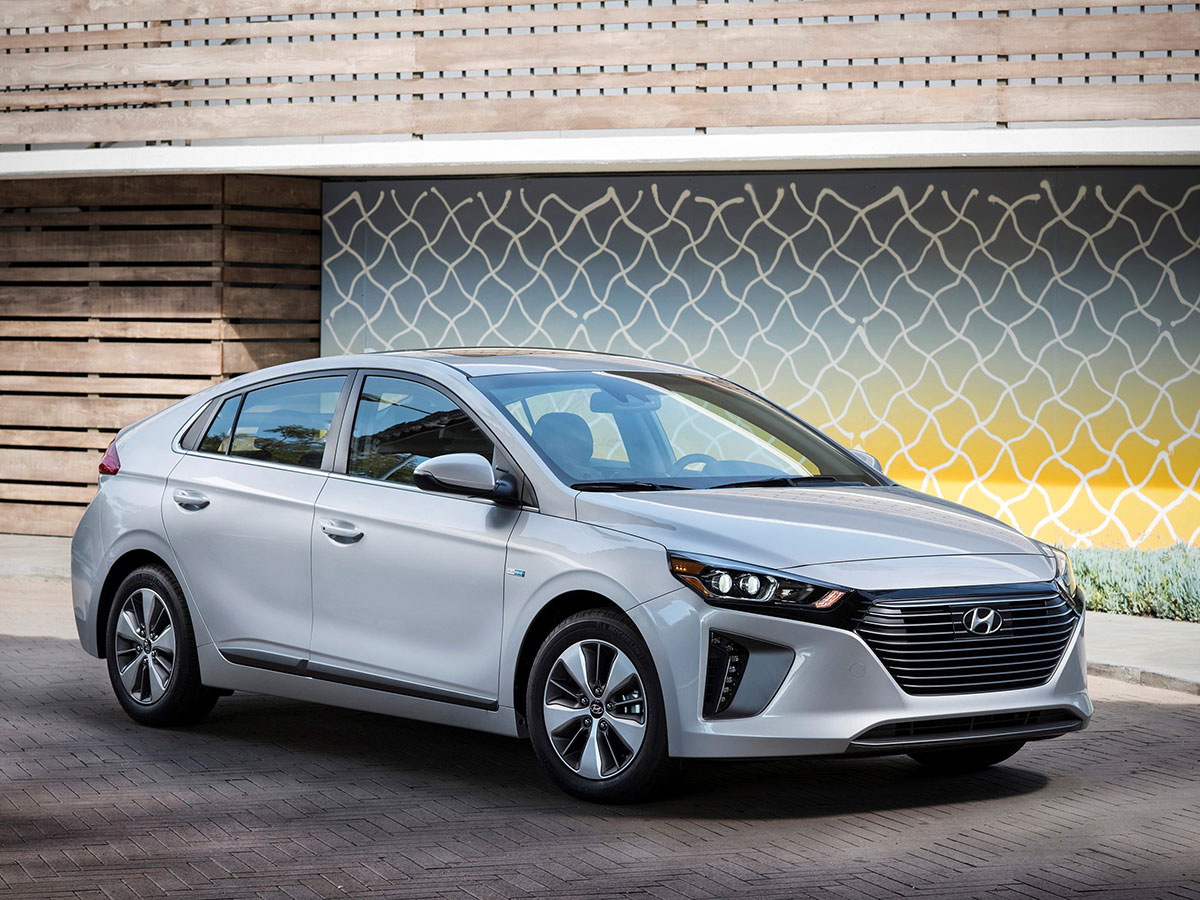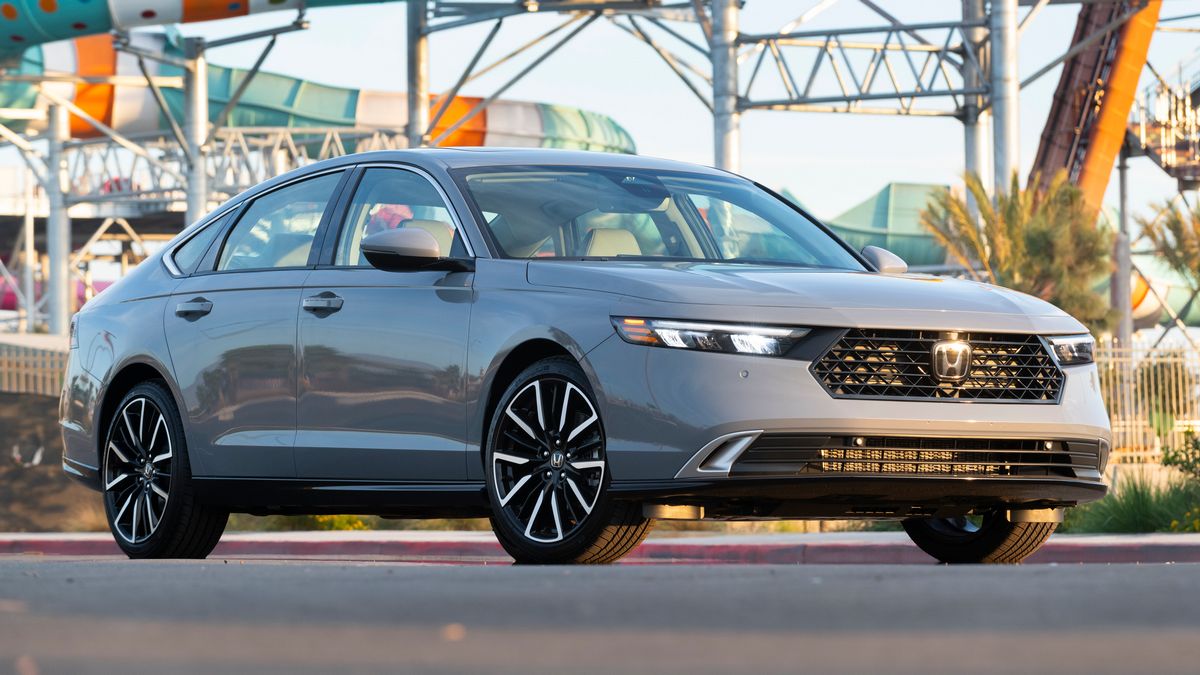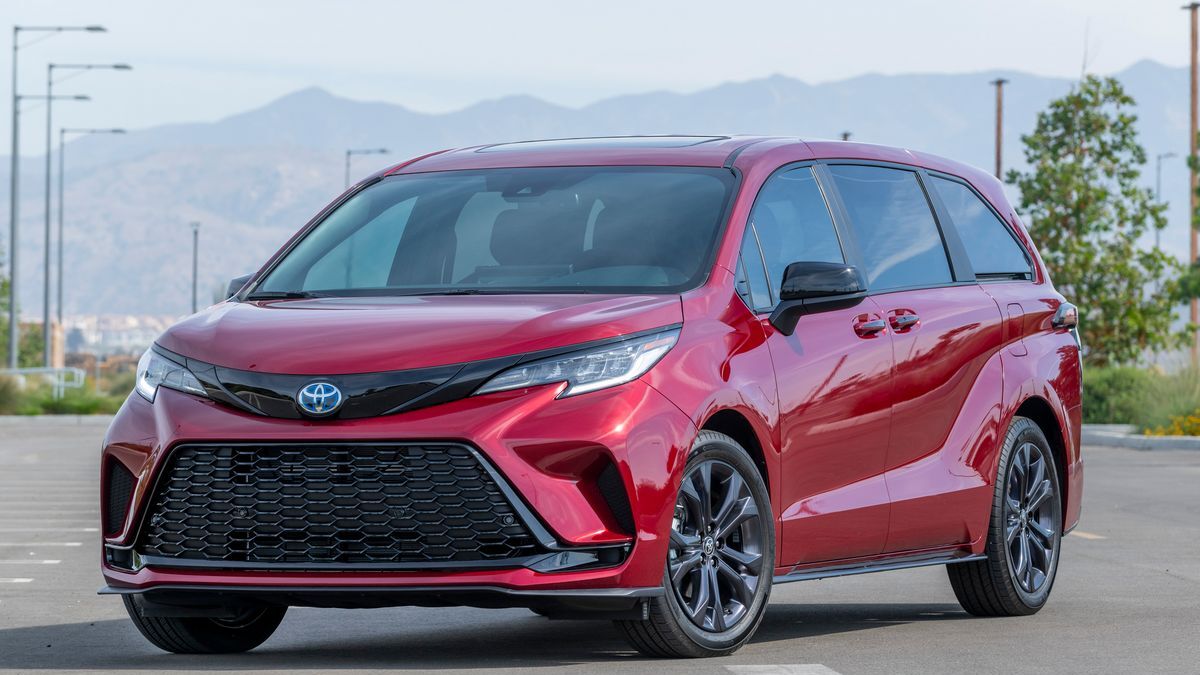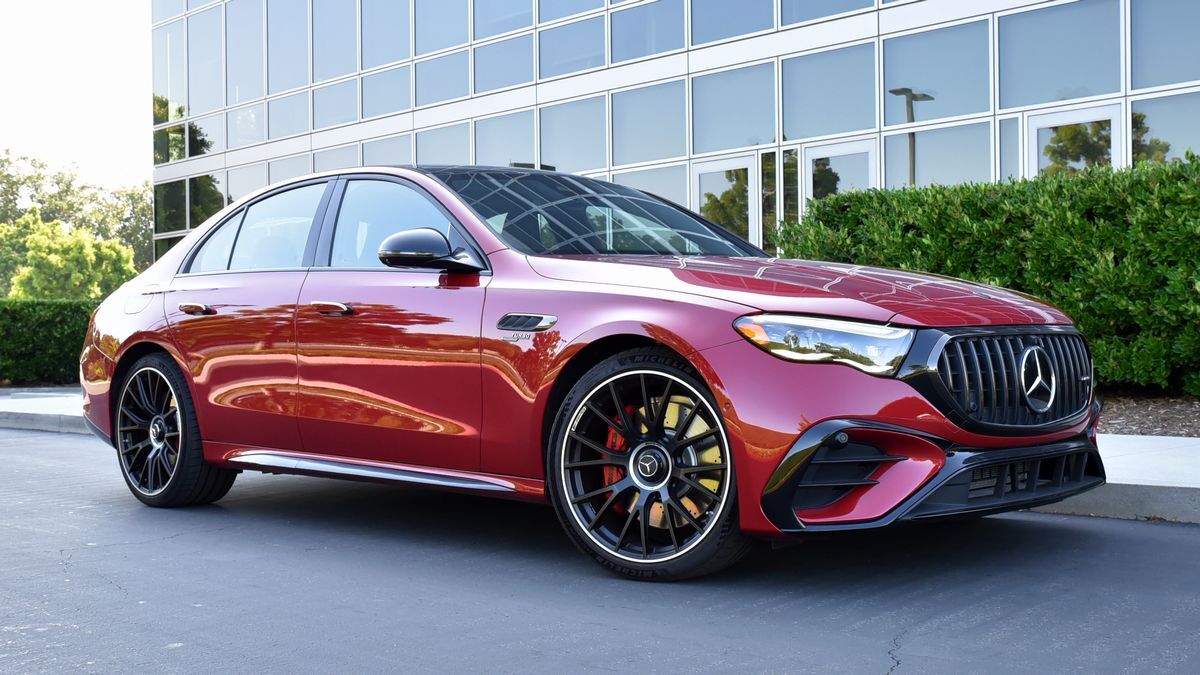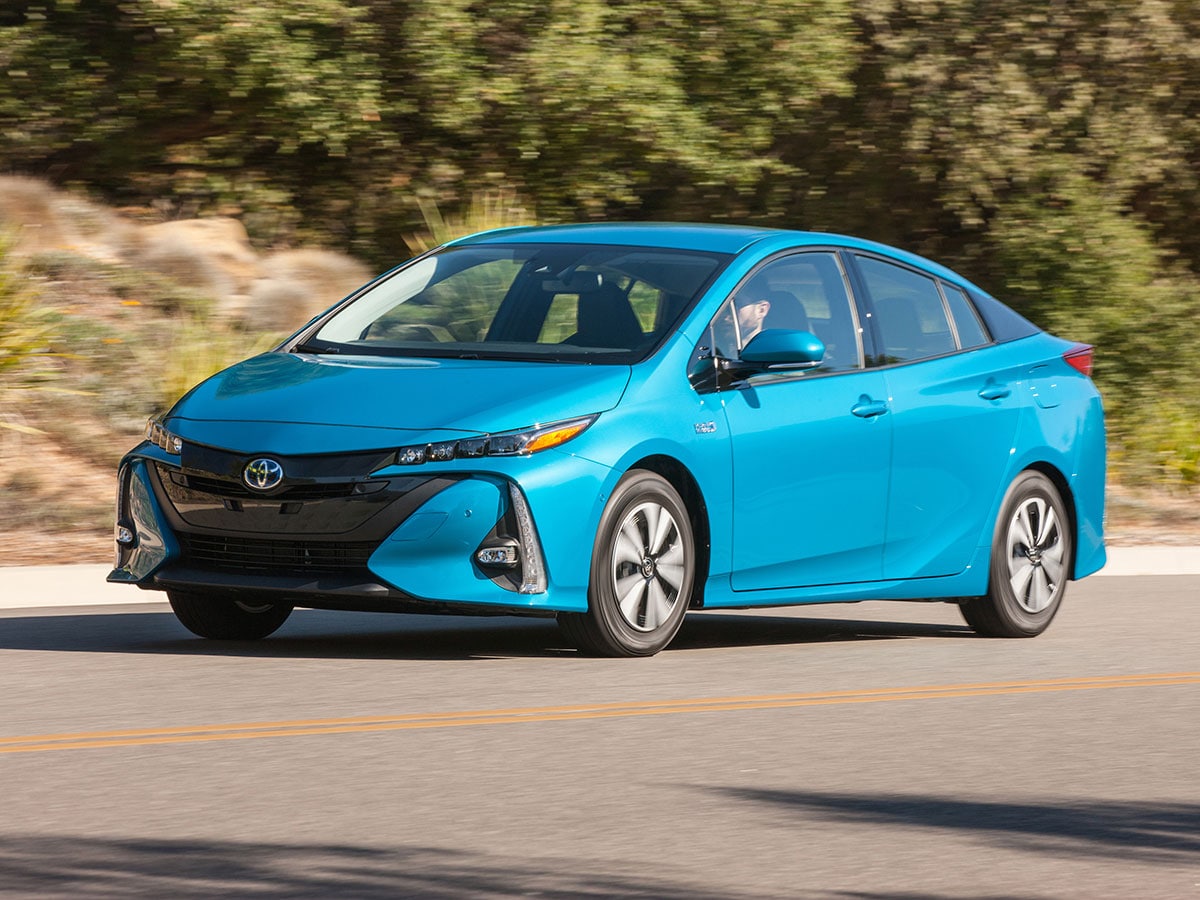
Starting Price: $27,965
Net power: 123 horsepower
Total range (gasoline/electric): 640 miles
Electric-only range: 25 miles
EPA fuel economy (city/highway combined): 54 mpg
A conscious, conscientious decision
Toyota’s second crack at a plug-in hybrid in its pioneering Prius lineup brings enough differentiation in both styling and performance to warrant a serious look at this vehicle for those who want the best of both the pure electric and hybrid worlds.
While the 2018 Toyota Prius Prime doesn’t have the same all-electric range as its archrival Chevrolet Volt, it does offer 25 miles of pure EV mode, plus an impressive 54 mpg EPA combined fuel-economy rating when it’s running as a conventional hybrid (the agency gives it a 133 MPGe rating when both modes are combined). On our road trip, the Prius Prime went more than 475 miles on a single tank with an overall mpg of 54.3 mpg. See how that and other important specs compares against the other three cars we took on our trip.
Living with it
From an aesthetics point of view, the Prius Prime’s design is what you’d call polarizing. I like the differences it has from the standard Prius — little things like the double-bubble rear glass and the trick rear LED lights. Unlike its standard siblings (and the previous-gen Prius plug-in), the Prime seats four not five, which is an honest and refreshing admission that the center position is really not spacious or comfortable enough to warrant a seatbelt. By comparison, the Volt says it’s a 5-passenger hatch, but the rear center rider must straddle a huge hump.
The Prius Prime also takes advantage of the Toyota New Generation Architecture, which means it has an independent suspension resulting in a supple ride and taut handling characteristics you wouldn’t expect from a high-mileage vehicle. The Prime is no 0-60 mph road burner, nor should you expect it to be. Nonetheless, it keeps up smartly with freeway traffic. Two-lane passing, however, will require some advance planning.
Listening to it
Even as the Prius Prime delivers on performance in mileage and driving ease, it comes up short by pushing infotainment too close to the ragged edge. Its vertical Tesla-like center display is mostly touch-activated. So changing radio stations, adjusting the climate controls, and other interactions with the car can be a bit distracting. Also, the large surface of the screen is highly reflective and in the early morning or late afternoon when the sun angle is low, the light bouncing off the screen can be blinding. I found myself preferring the more conventional control schemes of the Hyundai Ioniq to the Prius. And if you’re an Apple CarPlay or Android Auto devotee, shop elsewhere for now.
Our test 2018 Prius Prime was the range-topping Advance model with such standard features as navigation with Toyota’s Entune app suite, a 4.2-inch color display in the dash center above the main screen with all sorts of informative readouts, a color head-up display, and a full suite of driver assists including blind-spot alert with cross-traffic warning, lane-departure warning with steering assist and full-speed dynamic radar cruise control. The MSRP is listed at $33,100 and with $895 delivery comes within a sawbuck of $34,000. That may be a bit pricey, but the icing on the cake is that as a plug-in hybrid, it’s eligible for a $4,500 federal tax credit.
Our Pure-Electric Commute in the 2018 Toyota Prius Prime
EPA estimated range: 25 miles
What we actually got: 35.9 miles
With a daily commute of just around four miles, the idea of a plug-in hybrid like the 2018 Toyota Prius Prime holds a lot of appeal. The official 25-mile pure-EV range is perfect for multi-day commutes without having to plug in. When I did charge, it didn’t take long (4-5 hours) to replenish the battery even on a standard 120-volt outlet.
Theoretically, if all I did was use the Prius Prime for my daily commute, I’d never have to buy gas. And the ability to recharge using a standard home outlet obviates the need for an extra-cost Level 2 charger putting out as much as 240 volts (cutting down the recharge time).
On our northbound traffic-jam journey from KBB on a full charge, I was able to go 35.9 miles before the engine engaged. Another time, I managed 26.2 miles as a pure EV on an open freeway at speeds between 70 and 80 mph. On the pure EV side of the plug-in equation, the Prius Prime ranks pretty high in my case as a daily commuter and with the ability to function as a standard gas-electric hybrid, has the ability to be an efficient road tripper. –Matt DeLorenzo
The other PHEVs in this test:
The car that famously brought mass-market appeal, access and peace of mind of gasoline/electric plug-in hybrids still plays a strong role in the PHEV world.
Read more.
2018 Honda Clarity Plug-In Hybrid
The Kelley Blue Book 2018 Best Buy award winner in the Electric/Hybrid category deserves your consideration as well.
Read more.
2018 Hyundai Ioniq Plug-In Hybrid
With a good price and great fuel economy and driving range, the Ioniq represents the best of what a PHEV value should be.
Read more.

